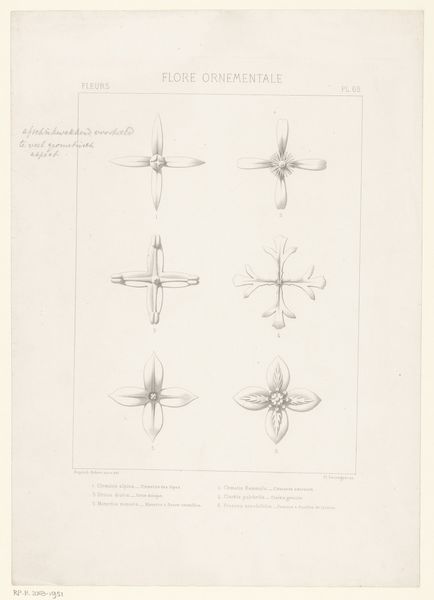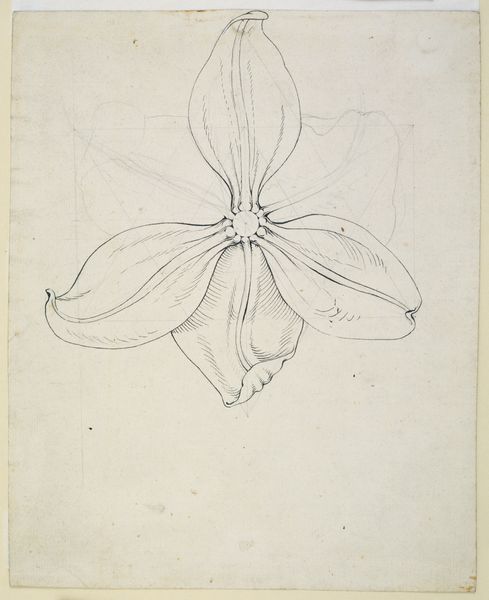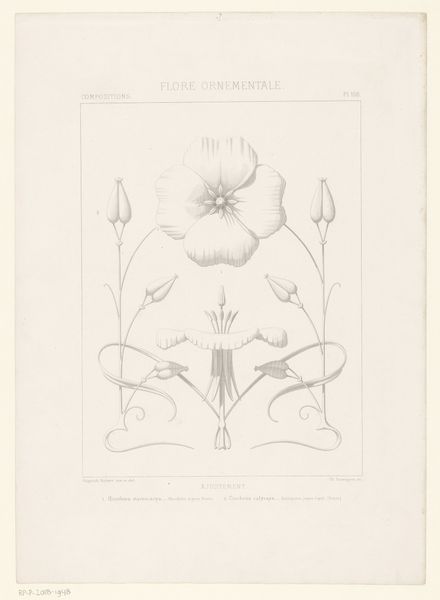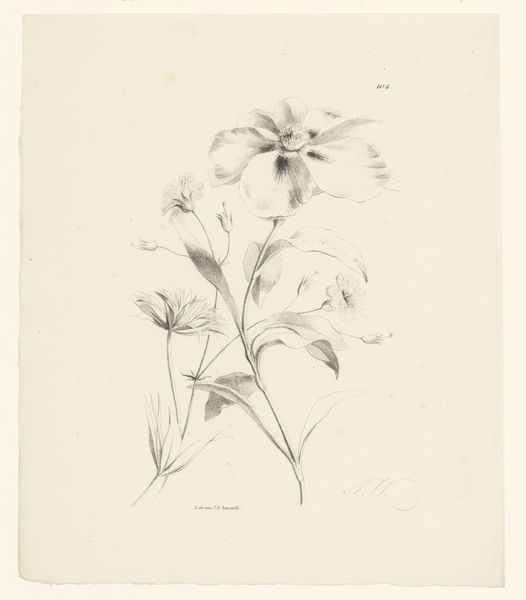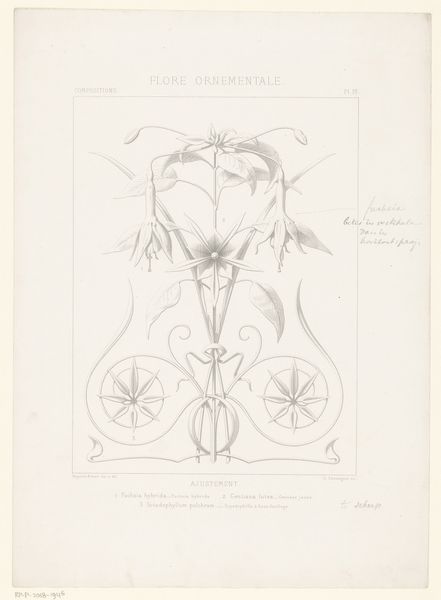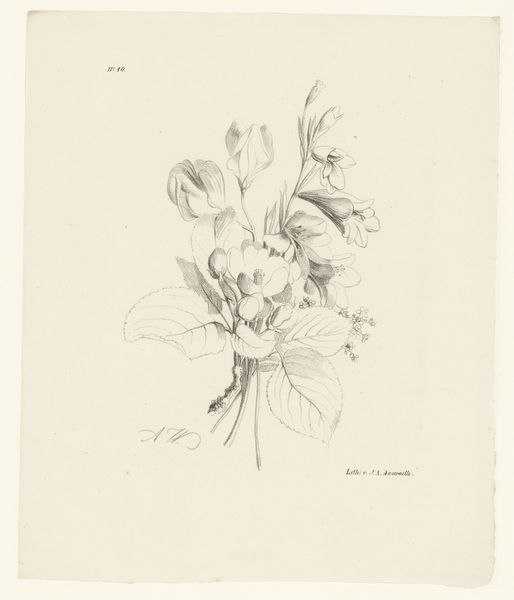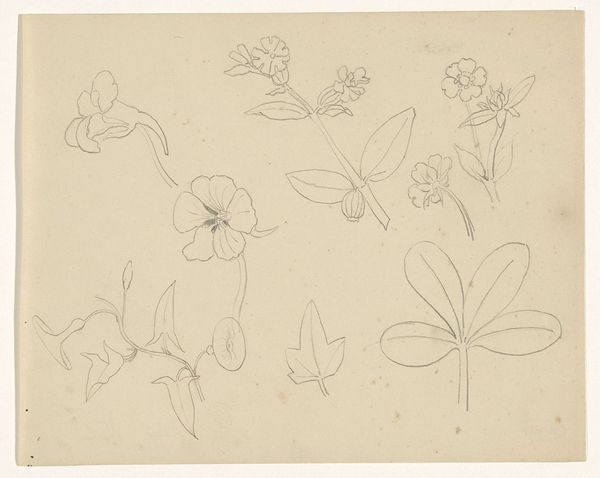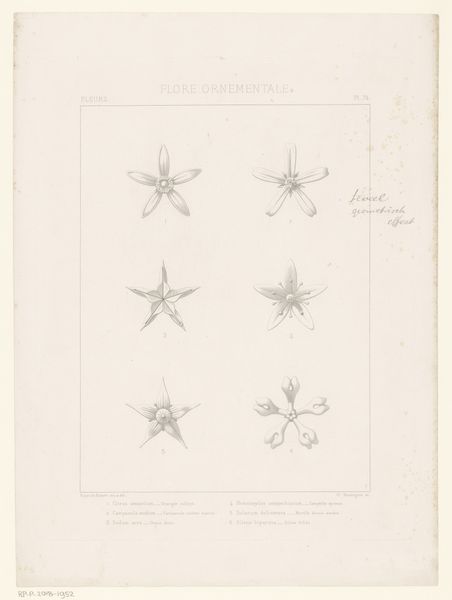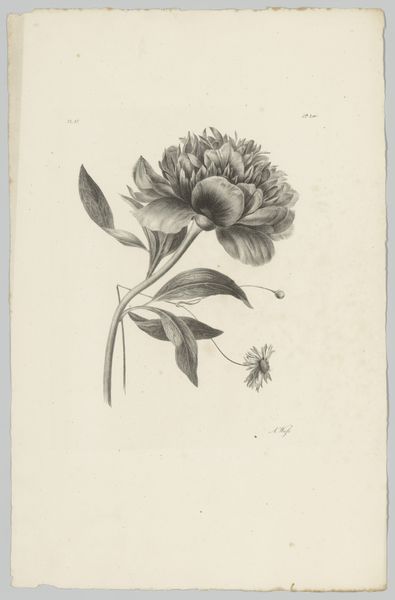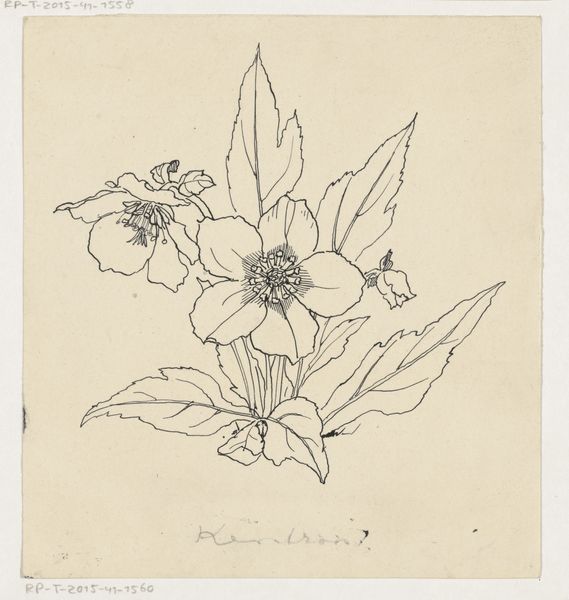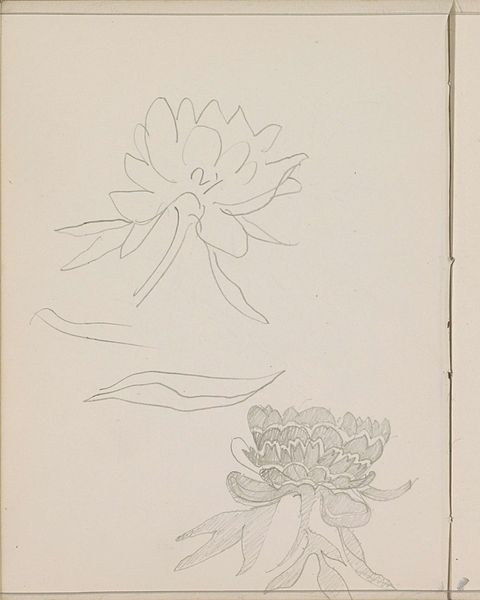
Studieblad met verschillende aanzichten van twee bloemen van vogelmelk en tuinui 1842 - 1885
0:00
0:00
drawing, print, paper, engraving
#
drawing
#
light pencil work
#
shading to add clarity
# print
#
old engraving style
#
paper
#
sketchbook drawing
#
academic-art
#
naturalism
#
engraving
Dimensions: height 327 mm, width 257 mm
Copyright: Rijks Museum: Open Domain
Curator: Up next, we have an intriguing study sheet featuring two flower depictions, elegantly titled "Studieblad met verschillende aanzichten van twee bloemen van vogelmelk en tuinui." Created by Claude Sauvageot between 1842 and 1885. Editor: My first impression is that there’s a beautifully delicate simplicity to it. The muted tones of the engraving create a calm and almost scientific feel. Curator: That’s insightful. Sauvageot, known for his precise botanical illustrations, was likely influenced by the growing interest in natural history and classification systems of the era. These images could have served a practical purpose, like inclusion in a botanical catalog. Editor: Notice the delicate rendering of the petals, how each is individually shaded to create volume and form. The symmetry and balanced composition give a sense of order. Curator: Exactly. During the 19th century, scientific illustration was often associated with a moral and social responsibility. Accuracy in depicting nature was viewed as contributing to the larger goals of enlightenment and social progress. Editor: Do you think there's any symbolic intent, or do you find the artistry confined purely to representation of the natural forms themselves? The medium contributes, I think, a feeling of austere detachment. Curator: I would hesitate to impute broad symbolic meanings. In my understanding, the work echoes that specific historical embrace of empirical observation and documentation for broader societal advancement. Editor: So, ultimately, these beautiful forms act more as entries in a visual catalogue of sorts? Curator: Precisely. Though beautiful, remember the context within which it was born and how science impacted all aspects of art making in the mid-19th Century. Editor: Right. Appreciating this work, for me, really becomes an exercise in viewing and understanding line, form and tone; recognizing its aesthetic qualities even if the intentions were not expressly "artistic" in a modern sense.
Comments
No comments
Be the first to comment and join the conversation on the ultimate creative platform.

